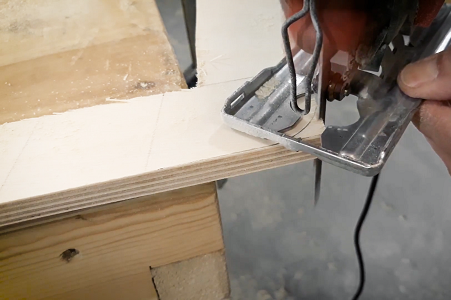How to paint a living room for a cheerful atmosphere
A fresh coat of paint can transform your living room. It can boost your home's mood and appeal. Painting creates an emotional sanctuary that reflects your style.
Painting a living room is more than just picking a color. The right paint can make your space feel bigger and brighter. Color psychology is key in creating comfy and happy atmospheres.
This guide covers essential techniques and color selection strategies. You'll learn professional tips for a stunning living room makeover. These skills will help you craft a cheerful, welcoming space.
We'll explore perfect color palettes and flawless painting techniques. You'll gain knowledge to revitalize your living space. Expert methods will guide you through the process.
Essential Tools and Materials for Living Room Painting Success
Careful selection of tools and materials is key for DIY room painting. The right equipment can transform your living room into a spectacular space. Quality tools ensure professional-looking results that will make your living room shine.
Professional painters know the best interior paint for living rooms. They understand the essential tools needed for a successful painting experience. Quality matters more than quantity when choosing painting supplies.
Professional-Grade Paint Brushes and Rollers
High-quality brushes and rollers can greatly improve your painting outcome. Synthetic bristle brushes work best with latex paints. Natural bristle brushes excel with oil-based products.
For large wall surfaces, choose rollers with the right nap thickness. Typically, 3/8 to 1/2 inch nap works best for smooth walls.
High-Quality Paint Types and Finishes
Choosing the right paint finish is crucial for living rooms. Eggshell and satin finishes provide a subtle sheen perfect for low-traffic areas. *Washable and durable paints* offer longevity and easy maintenance.
Protective Materials and Cleaning Supplies
DIY room painting tips always include proper protection. Use drop cloths, painter's tape, and plastic sheeting to safeguard floors and furniture. Wear protective clothing to keep yourself clean during the painting process.
Stock up on cleaning supplies like paint thinner, rags, and soap. These items help manage unexpected spills and maintain a clean workspace.
Best Interior Paint Colors to Create a Cheerful Living Space
The right colors can transform your living room from ordinary to extraordinary. Colors influence mood, perception, and room atmosphere. A perfect paint choice makes your living room inviting, energetic, and personalized.
Understanding Color Psychology
Warm colors like sunny yellow, soft oranges, and gentle reds create an energetic and welcoming environment. Benjamin Moore's *Suntan Yellow* or *Mandarin Orange* inject warmth and vitality into spaces.
Cool colors like soft blues and greens promote calmness and relaxation. These shades can help create a peaceful atmosphere in your living room.
Top Paint Recommendations
Sherwin-Williams offers great options for cheerful living spaces. Their *Positive Ray* yellow and *Hopeful* green generate positive emotional responses.
These colors work well in rooms of various sizes. They help expand smaller spaces visually while maintaining an uplifting atmosphere.
Strategic Color Combinations
Consider room dimensions when choosing living room color schemes. Smaller rooms benefit from lighter, brighter shades that reflect light.
Larger rooms can use deeper, more saturated colors without feeling cramped. Pairing complementary colors can enhance your living room's appeal.
How to Paint a Living Room: Step-by-Step Process
Transform your living room with a fresh coat of paint. Clear furniture and protect it with drop cloths. *Proper protection prevents accidental paint splatters and damage*.
Prepare walls for a professional-looking finish. Clean them with mild detergent to remove dirt and grease. Fix holes with spackling compound and sand smooth. Apply painter's tape around trim and outlets.
Use high-quality primer for a smooth base. Roll large surfaces and brush edges and corners. *Work systematically from top to bottom* for even coverage. Apply two thin coats, allowing drying time between.
Maintain a consistent technique while painting. Hold the roller at a 45-degree angle and use overlapping strokes. Keep a wet edge to prevent visible lines. Use natural light to check for missed spots.
Clean tools right after painting. Remove tape carefully at a 45-degree angle. Let walls dry completely before replacing furniture. Your living room will look fresh and professionally finished.
Modern Living Room Paint Color Trends and Combinations
Interior design fans are embracing bold approaches to modern living room paint colors. Today's color palettes go beyond traditional neutrals. They introduce dynamic combinations that transform living spaces into vibrant sanctuaries.
Contemporary Color Schemes
The latest living room color schemes mix sophistication and creativity. Sage green and warm terracotta tones are popular choices. They offer a natural connection while keeping a modern look.
Designers suggest pairing muted earth tones with crisp white trim. This combination creates depth and visual interest in your space.
Accent Wall Design Ideas
Accent wall ideas have grown beyond simple color blocks. Homeowners can now try textured paint techniques and geometric patterns. They can also experiment with unexpected color pairings.
A deep navy blue wall paired with light gray surroundings can boost your living room's appeal. This combo adds instant elegance to your space.
Two-Tone Paint Techniques
Two-tone paint techniques offer a stylish approach to modern living room design. You can split walls horizontally or create unique color gradients. These methods add architectural interest without major renovations.
Try soft blush pink transitioning into warm taupe. This combination creates a subtle yet striking visual statement in your room.
Professional Painting Techniques for Flawless Results
Painting walls like a pro takes skill and practice. Learn the secrets to create a smooth, even finish. These tips will help you achieve professional-grade results at home.
Prepare your workspace carefully before starting. Tape off edges, cover floors, and remove outlet covers. This creates clean lines and protects surfaces.
Master the cutting-in technique for crisp edges. Use an angled brush at a 45-degree angle. Apply gentle pressure to create smooth, controlled lines.
Load your roller evenly with paint to avoid drips. Use a W or M pattern to spread paint uniformly. Work in small sections, keeping a wet edge to prevent lap marks.
Apply two thin coats instead of one thick coat. This gives better coverage and a smoother finish.
Use painter's tape and a steady hand for windows and doors. High-quality brushes and rollers minimize marks and ensure a flawless finish.
Allow proper drying time between coats. Check for imperfections under consistent lighting.
Choose the right nap length for your roller. Shorter naps work best on smooth walls. Longer naps are better for textured surfaces.
Creating Statement Walls and Decorative Paint Effects
Transform your living room with innovative accent wall ideas. Painting techniques offer creative ways to express your personal style. These methods can turn blank walls into captivating focal points.
Decorative paint effects can dramatically change a room's atmosphere. They showcase your design creativity and spark conversation.
Geometric Pattern Techniques
Geometric patterns offer a modern approach to wall design. Use painter's tape to create crisp, clean lines. Triangles, diamonds, and hexagonal shapes work well for visual interest.
Measure and mark your wall carefully. Ensure symmetry and precision before applying paint.
Textured Wall Finishes
Textured painting techniques add depth to your living space https://dombezkompromisow.pl/. Sponging creates a soft, mottled effect for warm and inviting walls.
Ragging uses a bunched cloth to dab paint. This produces a unique, organic texture that breaks up monotonous surfaces.
Color Blocking Methods
Color blocking combines multiple colors in striking geometric arrangements. Select complementary or contrasting colors for visual drama.
This method works well for accent walls. It defines specific areas https://domspiration.pl while maintaining a cohesive design aesthetic.
Living Room Paint Maintenance and Touch-Up Tips
Keep your living room looking fresh after painting with strategic care. Regular cleaning with a soft microfiber cloth removes dust and protects the paint finish. This helps maintain your space's vibrant appearance.
Store some original paint in a cool, dry place for touch-ups. Use a small foam roller or artist's brush for minor repairs. Label containers with room, date, and color for easy reference.
Match touch-up paint exactly to the original color. Home improvement stores offer precise color matching services. Test the paint in a hidden spot to ensure perfect color and sheen alignment.
Inspect walls quarterly and address minor damages quickly. With proper care, your living room paint can look great for 5-7 years. This approach keeps your space looking fresh without frequent repainting.





